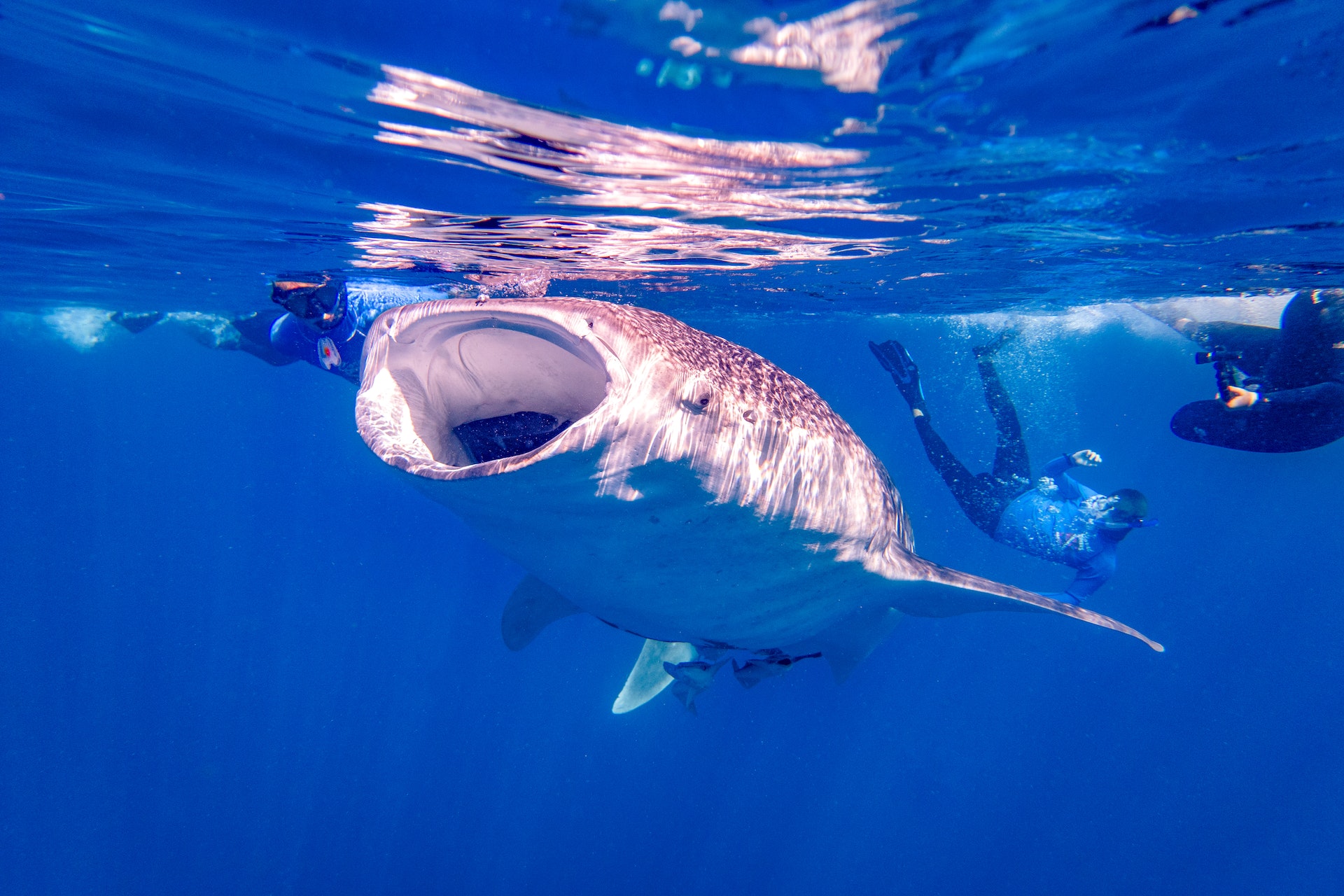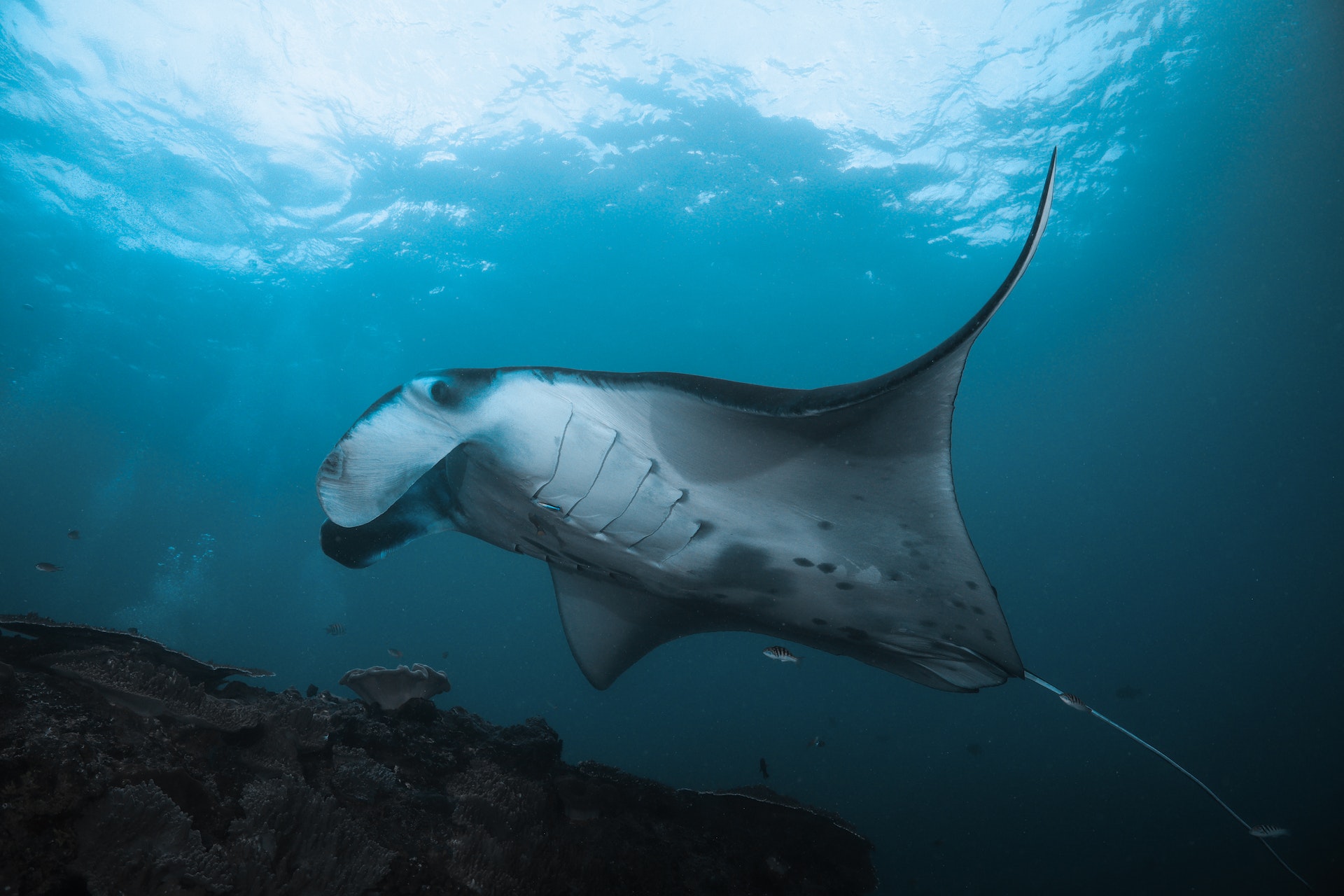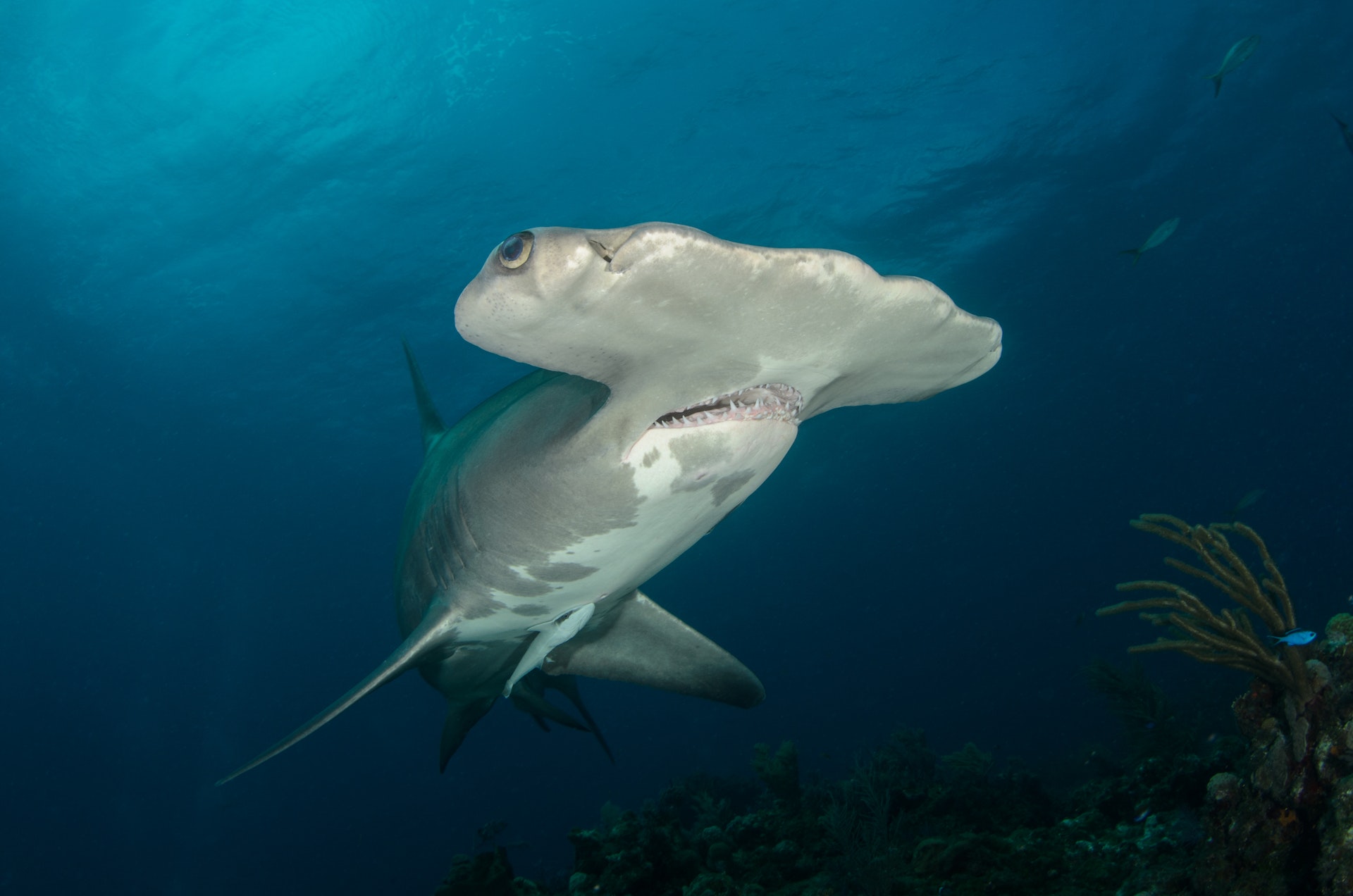If exploring an underwater utopia is top of your bucket list, there’s nowhere better to do it than the Galápagos Islands!
Located deep in the heart of the Pacific Ocean, this ancient archipelago is home to nearly 3,000 species of marine life, and is one of the world’s foremost diving destinations. Whether you want to swim in the wake of a bus-sized whale shark, marvel at the sheer magnitude of a manta ray, or surface among a school of sunfish – the Galápagos Islands are the place to make your dreams come true.
In this guide, we’ll delve into some of the marine life you can expect to encounter on your trip. If anything we write inspires you to visit, consider our Galapagos Land Tours, and our Galapagos Diving Liveaboard Packages. So, fasten your flippers, and let’s dive in!

The Galápagos Sea Lion
What’s cute, curious and can dive up to 600m deep? The Galápagos Sea Lion, of course! Endemic to the Galápagos, these animals are incredibly friendly, inquisitive, and have even been known to blow bubbles at approaching tourists, making for a great photo op!
As adept on land as they are in the sea, you’ll often find them frolicking in the waves or sunbathing on the beach, where they can cover ground faster than the average person can run. If you want to get up close and personal with these playful pups, have a look at our 8-day Discover Galápagos tour.
Whale Sharks
Out of all the wonderful wildlife in the Galápagos, none is as impressive as the whale shark.
As big as a school bus, these gargantuan giants can reach lengths of up to 60 feet (18 meters) and are one of only three species of filter-feeding sharks.
Although gentle by nature, they’re not immune to stress – so whether you’re snorkeling or scuba diving, make sure to approach them from the side and maintain a distance of at least 3 meters at all times.

Green Sea Turtles
If you’ve ever wondered how much algae and seagrass you’d have to eat to turn green, look no further than the green sea turtle! Hard-shelled and herbivorous, their finely serrated beaks help them consume large amounts of vegetation, which turns their fat a distinctive greenish hue.
Known for their epic migrations, you’ll find them breeding on various beaches between December and March each year, and in the coastal waters surrounding the islands year-round.
Galápagos Sharks
If we asked you to picture a stereotypical shark, there’s a good chance it would look something like the Galápagos shark. With their streamlined gray or gray-brown bodies, wide long snouts and large eyes, they can be hard to identify, often being mistaken for dusky or reef sharks instead.
Although first discovered in the Galápagos (hence the name), you’ll also find Galápagos Sharks off the coast of other tropical oceanic islands in the Atlantic and Indian Oceans. While they typically feed on fish found on or near the seafloor, they’re also partial to fur seals, sea lions and have even been known to eat their young!
For the ultimate shark experience, check out our Shark Encounters tour. Across 8 days, we’ll visit the most-frequented shark sites in the Galápagos, where you’ll be able to spot scalloped hammerhead sharks, black-tipped and white-tipped reef sharks and Galápagos sharks, along with tons of other magical marine life.
Manta Rays
Growing to widths of up to 23 feet (7 meters), it’s impossible to miss these mammoth diamond-shaped marvels! Despite their massive size, manta rays feed primarily on plankton and tiny fish, using special flaps to propel water and food into their wide, open mouths as they swim.
If you’re diving near coral reefs and coastal areas you’re more likely to spot reef manta rays, whereas oceanic manta rays prefer to hang out in deeper parts of the ocean. Although their size can be intimidating, manta rays are actually super friendly and curious – so don’t be surprised if you’re approached by one during your dive!

Spotted Eagle Rays
With their unique markings, kite-shaped bodies and poisonous barbed tails, spotted eagle rays are as stunning as they are stingy! Although we wouldn’t advise getting too close to these amazing animals, you’ll be able to spot them from a distance thanks to their distinctive spotted markings and considerable size of up to 11 feet.
Less sociable than manta rays, they’re pretty shy around divers, but we do often see them around Isabela Island and Santa Cruz Island.
Scalloped Hammerhead Sharks
Out of all of the 30-plus species of shark found in the Galápagos, the scalloped hammerhead shark is one of the most social. So social, in fact, that it’s not unusual to see hundreds or even thousands of them around the islands’ continental shelves and coral reefs!
Although they’ve got a bit of a bad reputation, scalloped hammerhead sharks are actually very shy around humans, to the extent that scientists struggle to study them.
If swimming with scalloped hammerheads is top of your shark-spotting agenda, be sure to check out our 11-day Born to Dive Galapagos tour.

Mola Mola
Despite sounding like the name of a tropical cocktail, mola are actually supersized sunfish that can be divided into two distinct species – the ocean sunfish (mola mola) and the giant sunfish (mola ramsayi).
Unlike typical fish, mola mola’s largest fins are on the top and underside of their bodies – making it look a bit like they’re swimming sideways, rather than the right way up.
For the best chance of spotting these wonderful weirdos, head to Isabela Island, where you’ll often find them basking near the surface of the water.
Start your Galápagos Adventure Today
While we couldn’t fit everything in this list, it’s easy to see why the Galápagos Islands are one of the top spots for sensational scuba diving in the world.
If you’re ready to embark on your next adventure, why not have a look at our daily Galápagos dive tours and multi-day diving packages? Whether you dream of playing with sea lion pups or swimming in the shadows of manta rays – you’re guaranteed to make memories that will last a lifetime in this magical world beneath the waves.
If you have any questions about our tours, or anything else, please get in touch and we’ll be happy to help.







